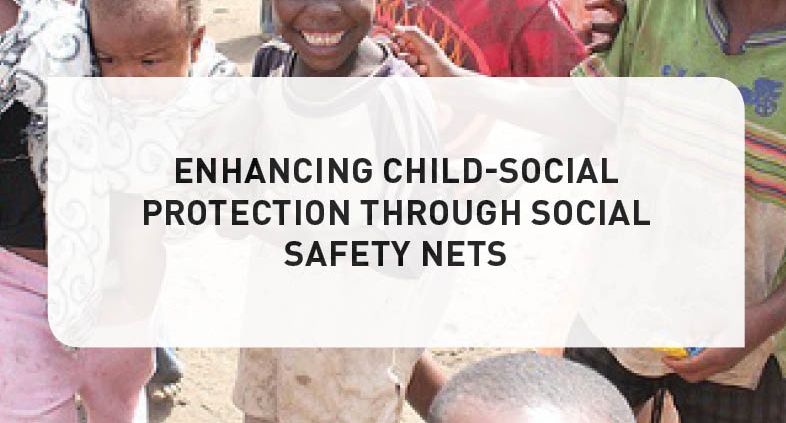Children are one of the most vulnerable groups in society and are therefore at risk of many social and economic challenges that negatively impact them due to their age and inability to provide or access basic social amenities. For this reason, Zambia has endeavoured to develop ‘child protection systems’ comprising of; sets of laws, policies, regulations and services needed across all social sectors – especially social welfare, education, health, security and justice – to support prevention and response to protection-related risks.
Evidence indicates that household and community level poverty are among the risk factors for child protection violations. Poverty leads to early engagement in sexual deviance, transactional sex and child marriages since children have no means to meet their basic needs. Evidence further suggests that certain child protection issues, including sexual exploitation, unnecessary family separation, child labour and child marriage have a more direct link to poverty. Children also tend to be most susceptible to hunger and disease, among many other social ills. These vulnerabilities are further heightened among children with disabilities. Thus, most children often resort to begging on the streets for survival, increasing their risk of physical, sexual and emotional abuse.
In recognition of these factors, the Government has strived to advance the rights of children through the Constitution, the National Social Protection Policy and the National Child Policy. Similarly, social protection programming has been strengthened as a response to the various challenges children face. These commitments have resulted in rolling out social safety net programmes that include the Social Cash Transfer (SCT), Home-Grown School Feeding Programme (HGSFP) and Public Welfare Assistance Scheme (PWAS). These programmes have been initiated in order to mitigate the impact of poverty among vulnerable populations with a special focus on improving child-wellbeing. Furthermore, the programmes have been formulated to enhance equitable access to basic social amenities that impact the quality of life for all. They have equally emerged as a primary policy tool to address poverty and vulnerability.
One clear example of an impactful social safety net mechanism is the SCT programme. It has been commonly linked to well-being outcomes for children such as improved nutrition, improved resilience to economic shocks, management of illness, improved school enrolment and mental health among beneficiary households.
Furthermore, the Government recognises that the foundation of an effective social protection system that sustainably lifts children out of poverty and enhances their inclusion and resilience requires an even balance between social grants such as social cash transfers as well as care through social welfare services that provide the care and protection of vulnerable children. Poverty is a complex phenomenon which consists of various overlapping deprivations that re-enforce one-another to create a complex matrix that includes but is not limited to; lack of income, limited access to information, housing, sanitation, health care, education, as well as sexual, physical or substance abuse. It is therefore imperative to provide a range of adequate cash and care interventions to address the challenges faced by vulnerable children and enhance child social protection.
In conclusion, the impact of these social safety nets has been immense leading to an improvement in all socio-economic indicators: schooling, health, general well-being, possession of shoes and blankets, and the regularity of meals. However, challenges such as high administrative costs, delays in disbursements of funds, limited human resource capacity at district and community levels (under the Department of Social Welfare) continue to undermine the impact of various programmes and the ability of households to cope and maintain a basic standard of living; forcing children into risky coping mechanisms.
This article is an extract from a PMRC analysis titled: “Assessing the Responsiveness of Social Safety Nets Towards Reducing Vulnerability Among Child Headed Households”. To access the analysis visit www.pmrczambia.com




